The Basketball Referee (Official)
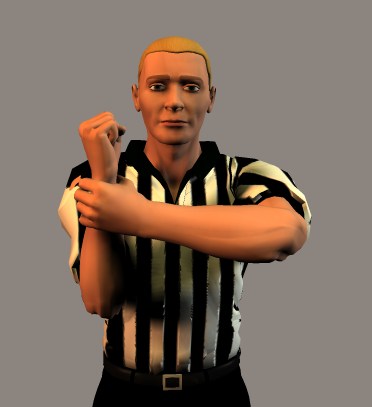 |
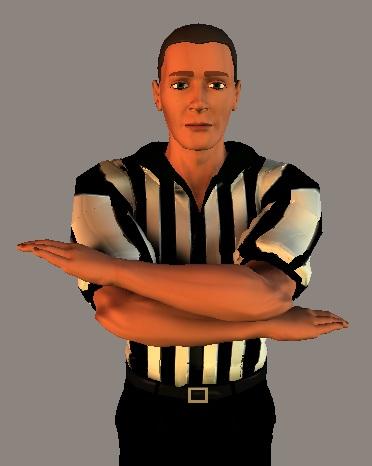 |
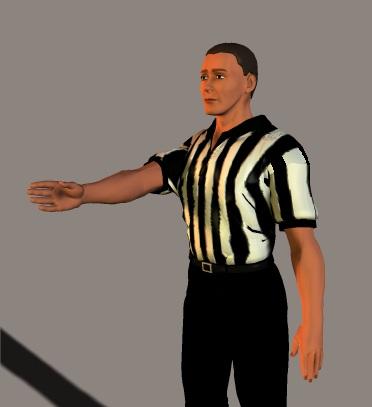 |
The Referee (Official)
Youth Basketball Referee Signals include Fouls and Violations. The referee is the “official” judge of the game. All calls are usually final! It’s very important to remember that being a referee is extremely difficult. They actually only have a “split second” to make the call. Referees are attempting to look at 10 players on the floor while having to listen to irate coaches and parents off the court. Coaches must not allow their players to lose focus because they are mad at the referees. Allow the Referees to do their job, and focus on your job as a coach.
You will never see a Referee walk up to a coach and say “I made a bad call” and then stop the game to change the call. This will never happen! When a call is made, it is usually final (good or bad).
Coaches must understand the different Youth Basketball Referee Signals in order to understand the game.
There are “Fouls” and there are “Violations”
Fouls are caused by physical contact (holding, pushing), or actions. Or even acting out like you are going to hit another player but you don’t. Or even extreme abusive yelling or cussing (technical foul).
Violations are actions by players that break a basketball rule – such as traveling, stepping on the line, and back court.

Prior to each “Foul” call a basketball referee will first perform this signal…
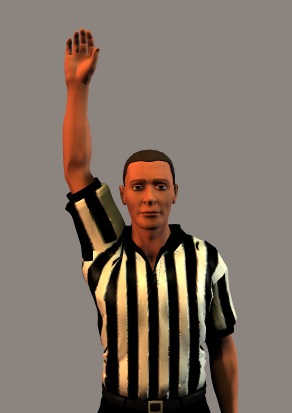 Prior to each “Violation” a basketball referee will first perform this signal…
Prior to each “Violation” a basketball referee will first perform this signal…
“Fouls”
Fouls are the act of making “illegal” physical contact with a player while the ball is in play. They can occur from a defender bumping into a player dribbling the ball. Reaching in and/or slapping the offensive player dribbling the ball. Moving their body (bumping) into an offensive player, bumping or hitting a player taking a shot, elbowing a player. Players cannot elbow, grab / hold, punch, push, scratch at, or trip a player on the other team. These are all considered fouls. Offensive fouls can occur when the player dribbling the ball runs into a defender who has established position.
Technical fouls can be called on players or coaches who are using unsportsmanlike conduct. Or called when a team has too many players on the court.
Incidental Contact
Incidental contact occurs when a defender makes contact with an offensive player and the contact is deemed insignificant. And the referees do not call a foul. This type of contact can also occur when two players are going for the ball at the same time. When players run into each other it’s very hard to determine which player ran into who first?. This type of contact is appropriate at times. But when allowed to continue for longer than it should, it can cause problems in the game (especially if left unchecked for too long).
Types of Personal Fouls:
Holding Foul – A “Holding Foul” occurs when a defender holds, grabs, or pulls an offensive player. It doesn’t matter if the offensive player has possession of the ball or not.

Holding Foul Signal
Pushing Foul – A “Pushing Foul” occurs when a defender pushes an offensive player or bumps into the body of an offensive player.
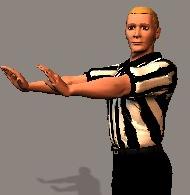
Pushing Foul Signal
Illegal Use of Hands Foul – This is a foul called when a defender slaps, hacks, or smacks an offensive player with the ball.

Illegal Use of Hands Foul Signal
Blocking Foul – A “Blocking Foul” occurs when a defender uses their body and makes contact with an offensive player with the ball. It could be in the form of running into the player, or setting an illegal screen, etc.
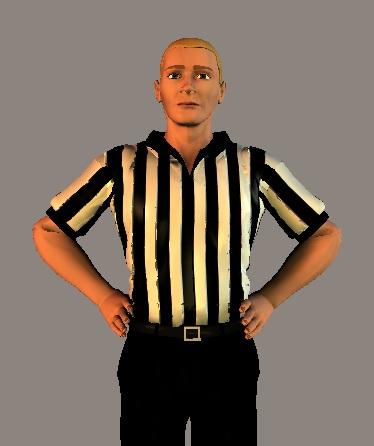
Blocking Foul Signal
Charging Foul (Charge)
Also called Player Control Foul – A “Charging Foul” occurs when an offensive player runs into (or over) a defensive player who already has position. A defender must first establish position. Other types of player control fouls are when a dribbler uses an elbow and hits a defender. Or excessive physical contact by an offensive post player trying to gain position. See “team fouls” below for more information on how an offensive foul does (or does not) affect team foul totals when in a “1 in 1” situation (when a team reaches 7 fouls).

Charging Foul Signal
Flagrant Foul
A foul that is made with “extreme” contact (violent in nature), and appears to be in an “intentional” manner to hurt or injure a player (bumping, elbowing, kicking, pushing, etc). Ex: An offensive player is in the air (attempting a lay-up) and the defender pulls the players’ shirt (putting the offensive player in harms way).
Note: At present time there is no specified signal for the Flagrant Foul. The ref uses the intentional foul call signal, then just verbally indicates that the foul was flagrant.
Intentional Foul – A type of foul that is designed to “stop the clock.” Used mainly at the end of the game with the coach instructing players to “foul” in order to stop the clock. This is to try for a chance to gain possession of the ball. Remember, a coach should not yell out the word “foul.” The basketball referee’s can call this as an “intentional foul.” Think about it. If a coach yells out “foul” and a player fouls, it is intentional. You have verbally requested your players to intentionally foul. It’s best to have some sort of signal or special word for this. I hold up my fist to signal the players to foul whenever the situation calls for it. Intentional fouls can also be called if there is “excessive” contact during a foul.
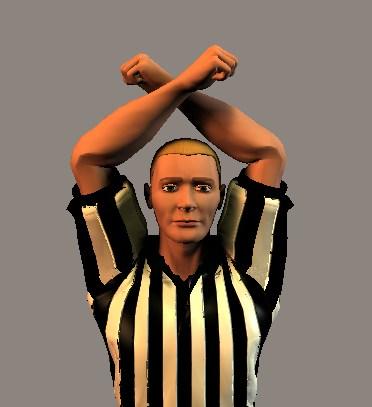
Intentional Foul Signal
Technical Fouls
Fouls of unsportsmanlike conduct and / or non-game violations that referees feel are affecting the game. Misconduct of coaches, players, and spectators can also draw a technical foul if a referee feels it is necessary to keep the game under control. The penalty for a technical foul is usually one free throw and possession of the ball after the free throw is taken (made or missed). If a player or coach receives two technical fouls in a game. This is an automatic disqualification for remainder of the game. Most high school leagues will suspend the coach or player for a game or two.
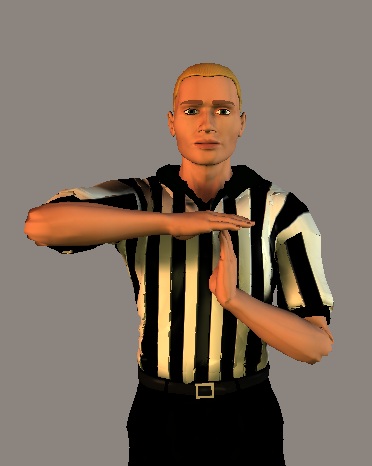 Technical Foul Signal
Technical Foul Signal
Personal Foul Penalties:
Shooting Foul (2 Point Shot) – If a player gets “fouled” while in the act of shooting (and the referee calls it), the player gets to shoot free throw(s). If the shot is made – the player gets to shoot 1 free throw, you will hear this called “And 1.” If the shot is not made and a foul is called – the player gets to shoot 2 free throws.
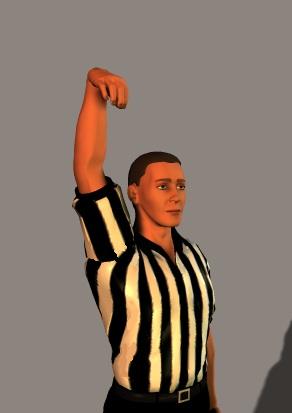
Basket Good Signal
Shooting Foul (3 Point Shot) – If a player gets “fouled” while in the act of shooting a 3-point shot (and the basketball referee calls it), the player gets to shoot free throw(s). If the shot is made – the player gets to shoot 1 free throw (which could turn out to be a 4-point play). If the shot is not made, and a foul is called – the player gets to shoot 3 free throws.
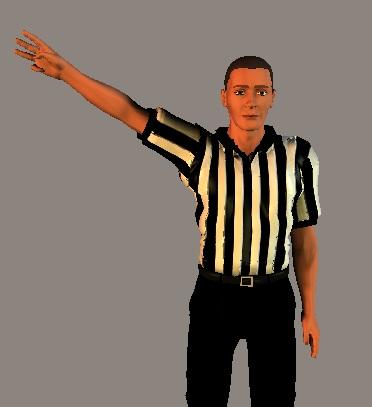
3 Point Attempt Signal

3 Point Shot Good Signal
Non-Shooting Fouls / Team Fouls:
Non-Shooting Fouls: If an offensive player is fouled while not in the act of shooting the ball. The ball stays in possession with the team that the foul was committed on. They will get to inbound the ball out of bounds at the nearest sideline or baseline. When inbounding the ball the team with possession will have 5 seconds to pass the ball in to another teammate on the court. All fouls – including shooting fouls and non-shooting fouls add up and are counted as team fouls. Offensive fouls (player control fouls) do not count as a team foul.
Team Fouls: Team fouls are the combined number of fouls that all the players on a team commit during one half of play. The fouls are totaled up and logged in by the scorekeeper in the official score book. When a team reaches 7 fouls, their opponent will get to shoot free throws. This is called a “one and one.” The player shooting the free throws gets to shoot 1 free throw, if they make it, they get to shoot another (one and one). If they miss the first free throw, they don’t get to shoot the second free throw. After a team reaches 7+ team fouls, their opponent is said to be in the “bonus.” And now will start shooting free throws after getting fouled.
When a team reaches 10 (or more) fouls, their opponent will automatically get to shoot 2 free throws. At half time the team fouls from the first half of the game are “zeroed” out. Team fouls are totaled all over again during the second half of the game.
Important Note:
Offensive fouls do not count towards team fouls. So if an offensive player happens to commit a foul, the defense will not get to shoot free throws. I have seen many coaches complain during a game when an offensive player commits a foul. They are wondering why isn’t his / her team shooting free throws? This is because that even if there are 7+ fouls, there are no free throws taken after an offensive foul.
Types of Violations:
Traveling (also called Walking or Walk) – If a ball handler takes too many steps while dribbling the referee can call a violation. This is considered a turnover by the player and the possession of the ball goes to the other team. Also if a player has stopped dribbling and moves their pivot foot. This is also considered a traveling (or walking) violation.
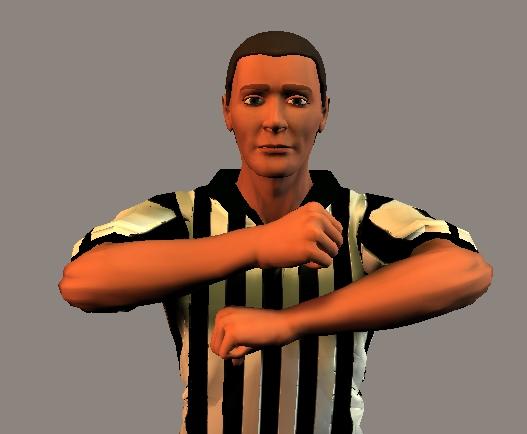
Violation / Traveling, Walking
Double Dribble (Illegal Dribble) – A dribbling violation occurs when a player stops dribbling and then attempts to dribble again or if a player attempts to dribble the ball with 2 hands.
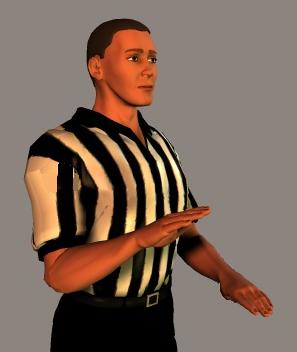
Carry (also called Palming) – A carry occurs when a player dribbles the ball with their hand too far under the ball (the dribble will look more like a carry than a dribble).
Backcourt (Backcourt violation) – Once the Offensive team has passed the half court line, they cannot:
a) dribble and/or
b) pass back over the half court line.
If this occurs, a “Backcourt” violation will be called by the referee and possession of the ball will go to the other team.
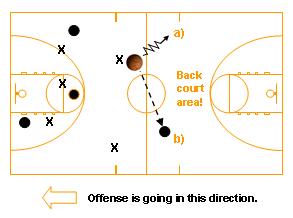
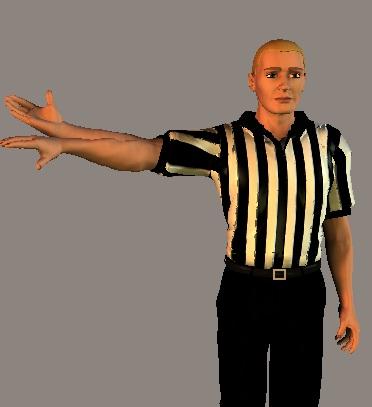
Backcourt Violation Signal
Inbound Pass Violation (5-Second Violation) – There are time restrictions that a player has when the ref hands them the ball to pass the ball into play. The player passing in the ball has five seconds to pass the ball in to another player. If the player fails to pass the ball in within 5 seconds, the ref will blow the whistle. This is a 5-second violation, and the ball is awarded to the other team.
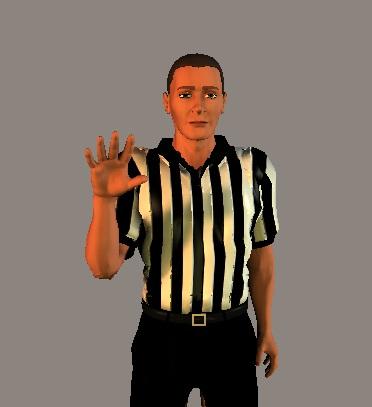
5-Second Violation Signal
10 Second Violation – When your opponent makes a basket, your team has 10 seconds to get the ball in play and past the half court line. If your team fails to do this within 10 seconds, the ball is awarded to the other team.
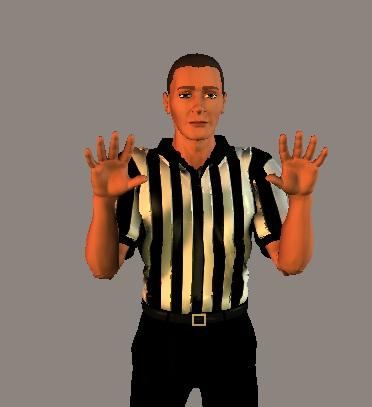
10-Second Violation Signal
Three Second Violation – An offensive player cannot remain in the “paint” area for more than 3-seconds. If the Ref happens to spot an offensive player in the paint area for more than 3 seconds, the whistle will blow, and the other team will get possession of the ball.

3-Second Violation Signal
Closely Guarded Violation – An offensive player cannot have possession of the ball for more than five seconds while being closely guarded by a defender. For example if an offensive player is dribbling the ball and is guarded closely by a defender for 5 seconds. The ref will blow the whistle, and the ball will be awarded to the other team.

Closely Guarded (Counting) Signal
Jump Ball
Also called Tie Up or Held Ball – This is when an offensive player and a defensive player gain possession of the ball at the same time. And the referee will blow the whistle. The referee will then look at the possession arrow (at the scorers table) and award possession to the team that the direction is pointing. Possession is on a rotating basis.
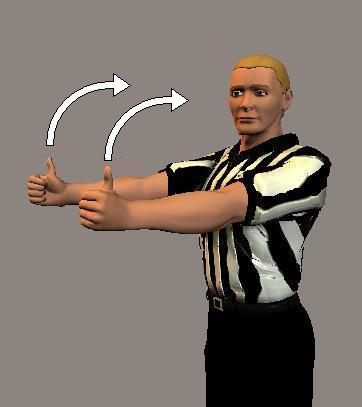
Tie Up / Held Ball Signal
Out of Bounds Designation – When the ball goes out of bounds (for any reason), or a player with possession of the ball steps out of bounds. The referee will designate the spot where the ball went out of bounds.
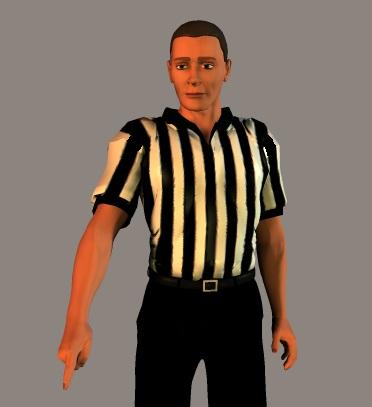
Out of Bounds Designation Signal
A Few Misunderstood Rules:
a) Players can “recover” a fumbled ball, traveling does not occur during the time it takes the player to recover. A player must have control of the ball in order to travel. A “fumbled“ ball is not considered having control of the ball.
b) Players cannot travel while dribbling the basketball. Traveling is considered taking one or more steps without dribbling.
c) If a player attempts to set a screen and is moving, it is not considered a foul unless contact is made.
d) The ball is not “out of bounds” if it rolls along the top edge of the backboard without touching the supports.
Some Myths Regarding Common Basketball Rules:
1. “Reaching In” Foul – There is no foul called “reaching in” found in the rulebook. The act of simply “reaching in” is allowed unless contact is made. The referee can call a pushing or holding foul, but there is no “reaching in” violation.
2. A player dribbles the ball above their head – Dribbling the Ball above a players head line is not a violation, the only restrictions that pertain are: The ball cannot come to rest and/or the dribblers hand must stay on top of the ball.
3. “Over the Back” – Players are allowed to reach over the back of another player as long as no contact is made. A taller player simply reaching over the back of another player for the rebound (without making contact) has not committed a foul. Again, the basketball referee can call pushing, holding, or illegal contact fouls. But there is no violation called “Over the Back” in the rule book.
Check out our New Download – Cheat Sheets Combo
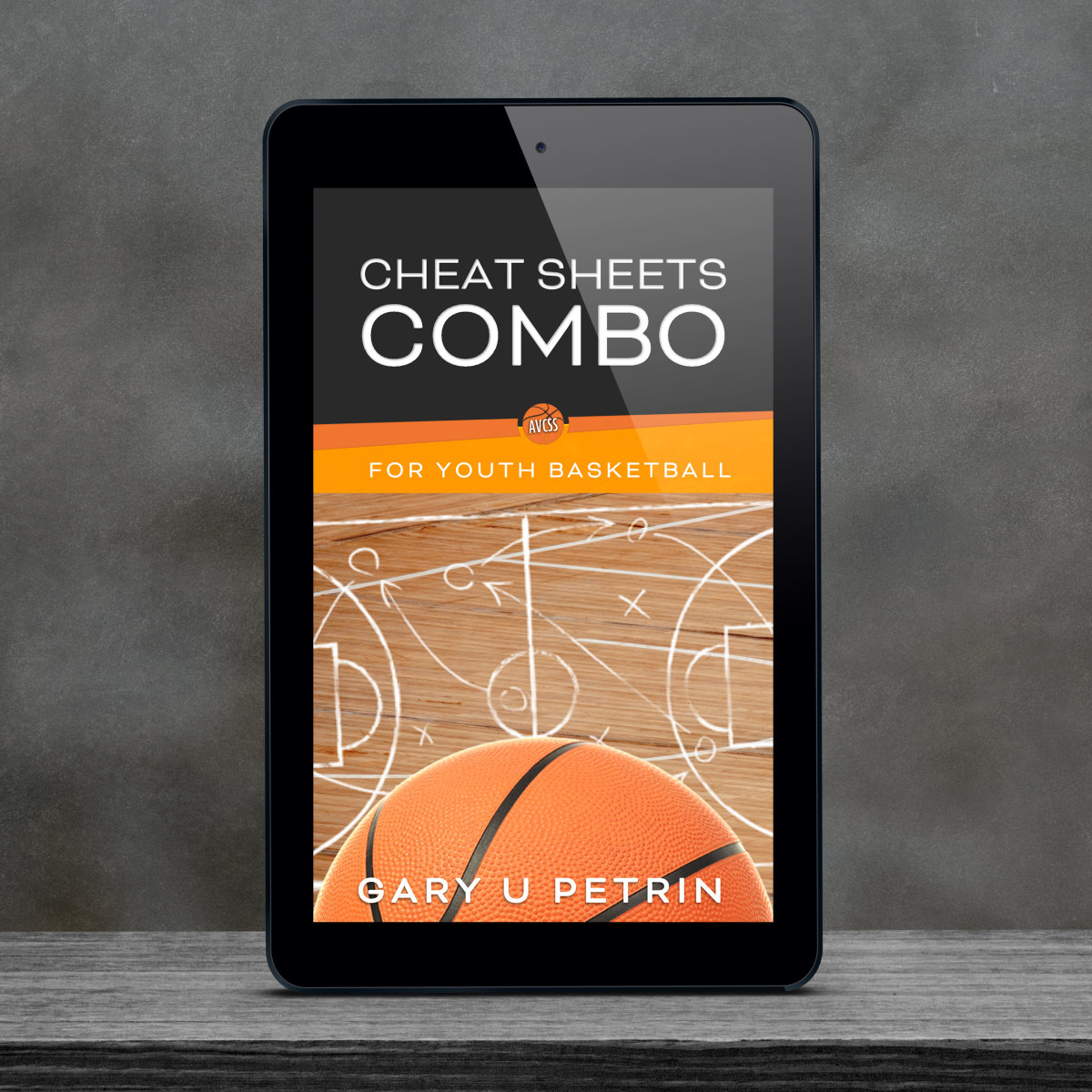
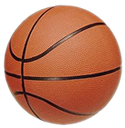

When u are dribbling and go around somebody and use your elbow by accident. And gets stuck between the arm and stomach I blow pass them. That a foul??
It’s not a foul if the ref doesn’t call it, but can be considered a foul if you push too hard with the elbow. Otherwise, you can have your elbow up if you keep it stationary to defend your dribble.